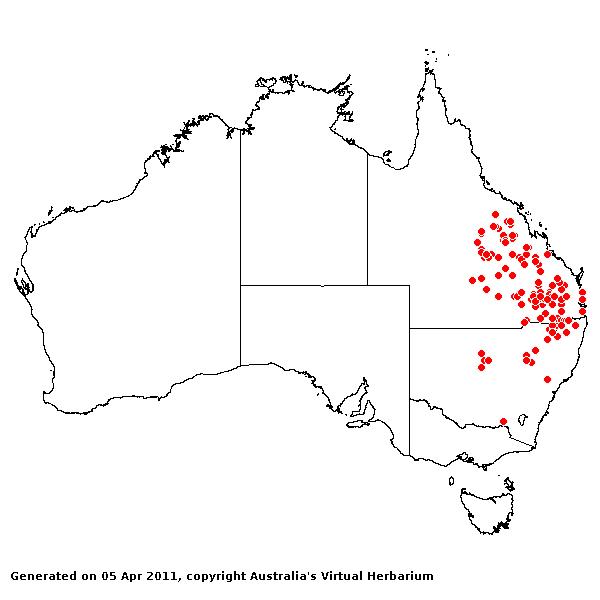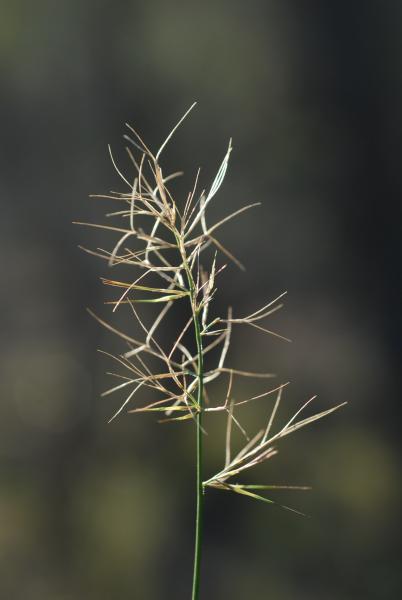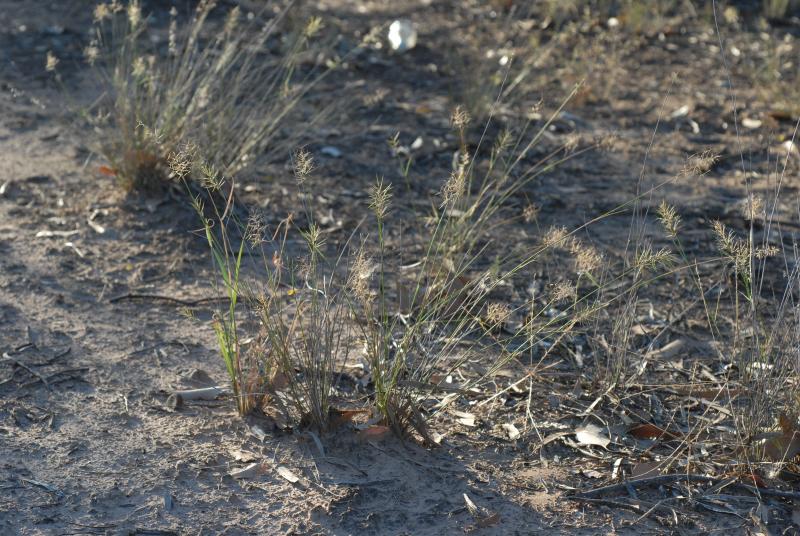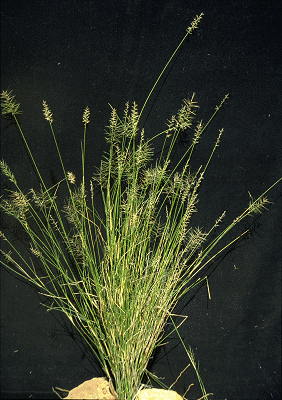Aristida caput-medusae Domin. Biblioth.
Bot. 85: 244, t.14 figs 3–5 (1915).
Classification. (GPWG 2001) : Subfamily
Aristidoideae. Aristideae.
Type of Basionym or
Protologue Information: HT: K. Domin s.n., Mar 1910, Australia:
Queensland: Mitchell Dist.: auf den Sandhügeln dew Dividing Range bei Jericho
(PR; IT: BRI, L).
Key references
(books and floras): [2002] D.Sharp & B.K.Simon, AusGrass, Grasses of
Australia, [2008] S.W.L.Jacobs, R.D.B.Walley & D.J.B.Wheeler, Grasses
of New South Wales (127).
Illustrations:
[1983] J.C.Tothill & J.B.Hacker, Grasses of Southern Queensland
(106(24)), [2008] S.W.L.Jacobs, R.D.B.Whalley & D.J.B.Wheeler, Grasses
of New South Wales, 4th edn (127).
Derivation: L. caput,
head; Medusa, monster with snakes for hair. Inflorescence a spike-like panicle
and the spikelets with long trifid, twisted awns.
Habit.
Perennial. Culms 33–85 cm tall. Mid-culm internodes glabrous. Mid-culm nodes
glabrous. Lateral branches branched. Leaf-sheaths smooth or scaberulous,
glabrous on surface. Ligule a fringe of hairs, 0.5 mm long. Leaf-blades
straight, conduplicate or involute or convolute, 2–4 cm long, 0.5–1 mm wide.
Leaf-blade surface scabrous.
Inflorescence.
Inflorescence compound, a panicle or a panicle. Panicle lanceolate or ovate,
3.9–8 cm long, 1–5 cm wide.
Spikelets.
Spikelets pedicelled. Fertile spikelets 1-flowered, comprising 1 fertile floret(s),
without rachilla extension, lanceolate, terete, 6–9.5 mm long.
Glumes.
Glumes similar, thinner than fertile lemma. Lower glume lanceolate, membranous,
keeled, 1-keeled, 1 -nerved. Lower glume surface glabrous. Upper glume
lanceolate, 4–8 mm long, membranous, keeled, 1-keeled, 1 -nerved. Upper glume
surface smooth to scabrous, glabrous. Upper glume apex entire or erose,
muticous or mucronate.
Florets.
Fertile lemma 6–9.5 mm long, without keel, 3 -nerved. Lemma apex awned, 3
-awned. Median (principal) awn without a column. Lateral lemma awns present.
Palea without keels. Anthers 3. Grain 4–6.1 mm long.
Continental
Distribution: Australasia.
Australian
Distribution: Queensland, New South Wales.
Queensland:
Burnett, Darling Downs, Leichhardt, Maranoa, Mitchell, Moreton, Port Curtis,
South Kennedy, Warrego, Wide Bay, North Kennedy. New South Wales:
North-Western Slopes, North-Western Plains.
Notes.
A. caput-medusae has very distinctive morphological facies, including a
knotty rootstock, fastigiately branching culms and a small uniquely shaped
panicle, ovate in outline, resembling the head of the Medusa of Greek
mythology, from which it derives its name. It has small spikelets similar to A.
vagans in that the lemma extends beyond the glumes but differs from this
species in that the panicle is smaller and regular in outline.
Central
and south-eastern Queensland to northern New South Wales.
Acacia, and Eucalyptus
communities on loams, sands and rocky soils. Flowering and fruiting all year.







